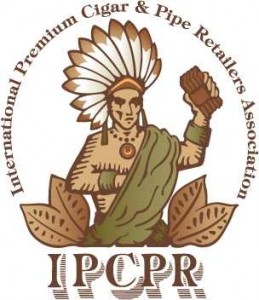Stogie Commentary: What Will the Future Bring?
9 Jul 2008
With the IPCPR Las Vegas convention on the horizon, it’s natural to think about new cigar releases and company announcements (which Patrick S will be detailing tomorrow). I’m afraid, however, I can’t help but look to the future with a little trepidation.
 In recent years, we’ve been blessed with many great cigars, the emergence of top-tier blenders, and some extraordinary limited edition smokes. But we’ve also begun to experience inconsistency, brand proliferation that seems to defy common sense, and lots of just plain duds.
In recent years, we’ve been blessed with many great cigars, the emergence of top-tier blenders, and some extraordinary limited edition smokes. But we’ve also begun to experience inconsistency, brand proliferation that seems to defy common sense, and lots of just plain duds.
It’s hard not to wonder if all the growth has, once again, pushed the need for the high-quality, well-aged tobacco that’s necessary for excellent cigars beyond availability. I know growers have expanded quite a bit in recent years, with Nicaragua probably the most notable example. And just think of the countries you often hear about now that were virtually non-starters in the production of cigar tobacco just a few years ago: Costa Rica, Colombia, Peru, Italy…
But growing tobacco isn’t the same as growing good tobacco. (I’ve had a couple of cigar makers tell me that it’s extremely easy to get tobacco these days, but competition for high-quality leaf is tougher than it’s ever been.) Then there are the requirements for aging and curing, processes that can’t be hurried without harming the outcome.
Consistency is also a critical factor for cigars. Smokers expect their sticks, with a few exceptions, to taste and perform more or less the same from box to box, year to year. It isn’t really like wine or high-end coffee, where the grapes and beans—and the results—are evaluated crop by crop. The demand for cigar repetition is more akin to liquor. In addition to a cigar’s taste, we expect to experience the same quality construction, draw, application of the cap, burn, etc., each time we light up.
When you consider all these factors—and look at the endless number of new cigars hitting the market—I think it’s hard not to feel some pessimism.
While it is possible, of course, to create an almost infinite number of blends, I don’t believe it’s possible to make so many consistently and to also make them good and distinctive as well. Consequently, I think we’ve all had the unpleasant experience of finding a new cigar that’s terrific, only to be roundly disappointed when you then bought a box. Or when you tried others by the same blender or manufacturer with poor results.
So, though I’m eager to learn about new cigars unveiled at IPCPR, I hope at least some of those in the industry will address the vital underlying issues of quality and consistency. That could give cigar smokers at least a little glance into what lies ahead.

 Patrick Ashby
Co-Founder & Editor in Chief
Patrick Ashby
Co-Founder & Editor in Chief Patrick Semmens
Co-Founder & Publisher
Patrick Semmens
Co-Founder & Publisher George Edmonson
Tampa Bureau Chief
George Edmonson
Tampa Bureau Chief
You make some excellent points, George. I've always thought of this post-cigar boom era as the Golden Age of Cigars, but I've also been wanting brands to sacrafice new introductions for improvements in existing lines.
The only problem is such improvements aren't as sexy as completely new blends–especially when your competitors are turning out new products and heavy marketing. I just hope the industry isn't doomed to repeat the tragedy of the boom…
I couldn't agree more, and in many ways I can't help wondering if we aren't repeating the mistakes of the boom all over again. Only this time, rather than a ton of startups cropping up every other day, it's a ton of new blends being released every other day by the established manufacturers. I've talked before about (IMO) the decline of Rocky Patel as a consistent brand. I blame the inconsistency of today's RP sticks almost entirely on RP's need to constantly expand its lines. At the beginning of 2007 I could count on one hand the number of Rocky Patel blends available. Now, midway through 2008, there are far too many to count. And I definitely think that overall quality and consistency from blend to blend, and even from stick to stick, has suffered tremendously.
As WilsonX points out, these new blends are the work of marketing initiatives, and they make sense from a business standpoint: if it costs me nothing to release a new line, I might as well release a new line. But in the long run, I think this strategy will prove counterproductive. If quality suffers as a result of splitting everything into countless lines, then brand equity is going to suffer eventually.
There's a reason why you don't see 15 types of Dom Perignon on the market after all these years: customers are very satisfied with the two or three available, and DP ain't fixin' what's not broke.
Jon N. I completely agree with you. In my opinion this is perhaps one of the reasons why brands like Padron are able to keep consistency and quality so high. They only have a handful of blends…my only gripe is that local tobaconists sell their sticks for an average of $18+ (the anniversary blends – not the regular Padron)
Great article George, hit the nail on the head in my opinion. I had a Padron last night that tasted completely different from the Padron I enjoyed so much just 10 days earlier. It's annoying, especially when you cherish your nightly cigar time and spend $5-8 per stick.
I completely agree with your assessment.
This came up last year in reference to Don Pepin making a new line for everyone under the sun.
I too will be looking for a through understanding from the manufacturers on how they plan to ensure consistency before I buy into them and introduce them to my customers.
That said….I find it very common, particularly with cigars that have supply issues, for customer's tastes to change. For example, customer is an avid A Fuente Don Carlos smoker. They are unavailable. They start smoking Camacho Diploma. After a few months, the Don Carlos are back on the shelf….the customer comments "these aren't as good as they used to be'.
In some cases it is true, but in other's the customer's taste has changed.
So…my point, consistency in supply is just as critical as consistency in the blend.